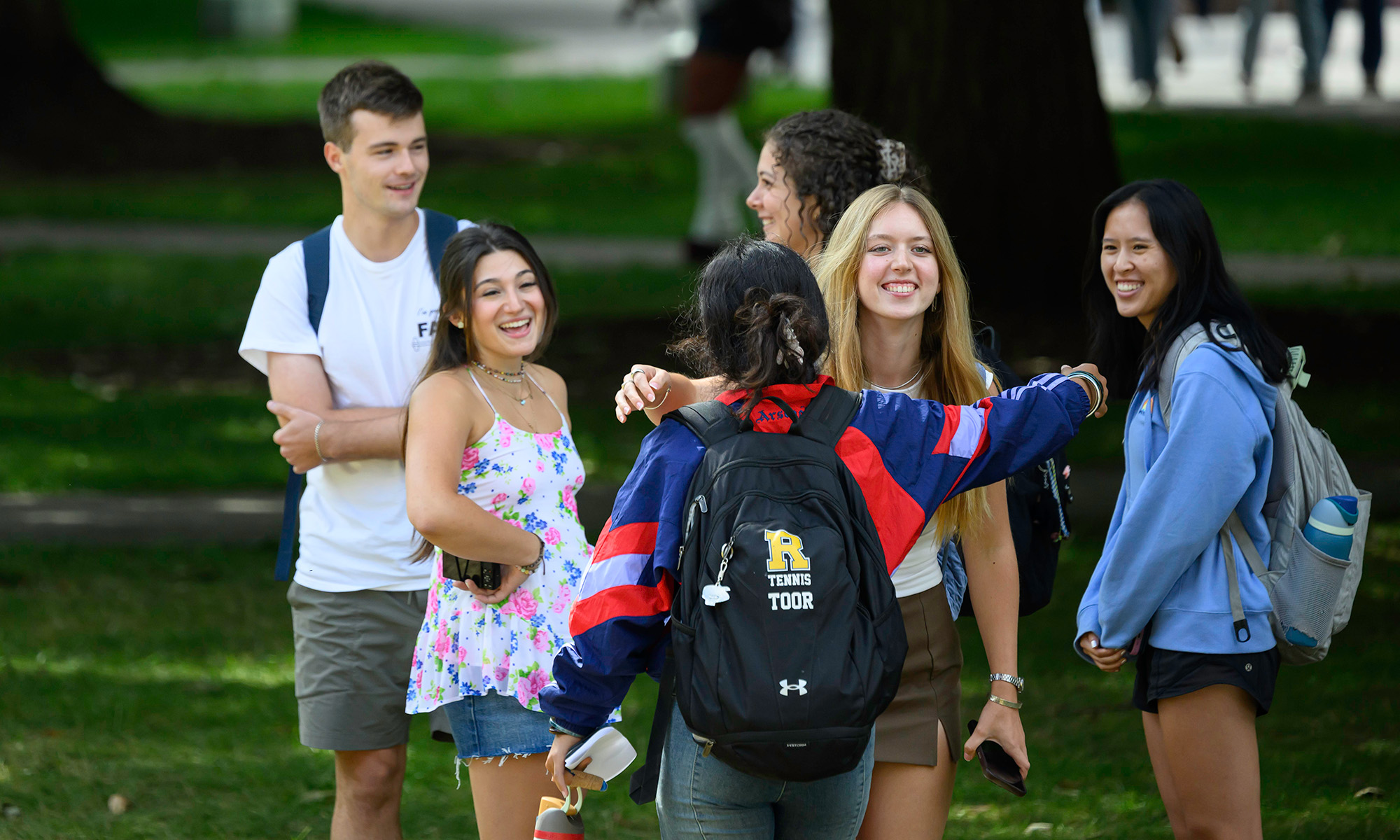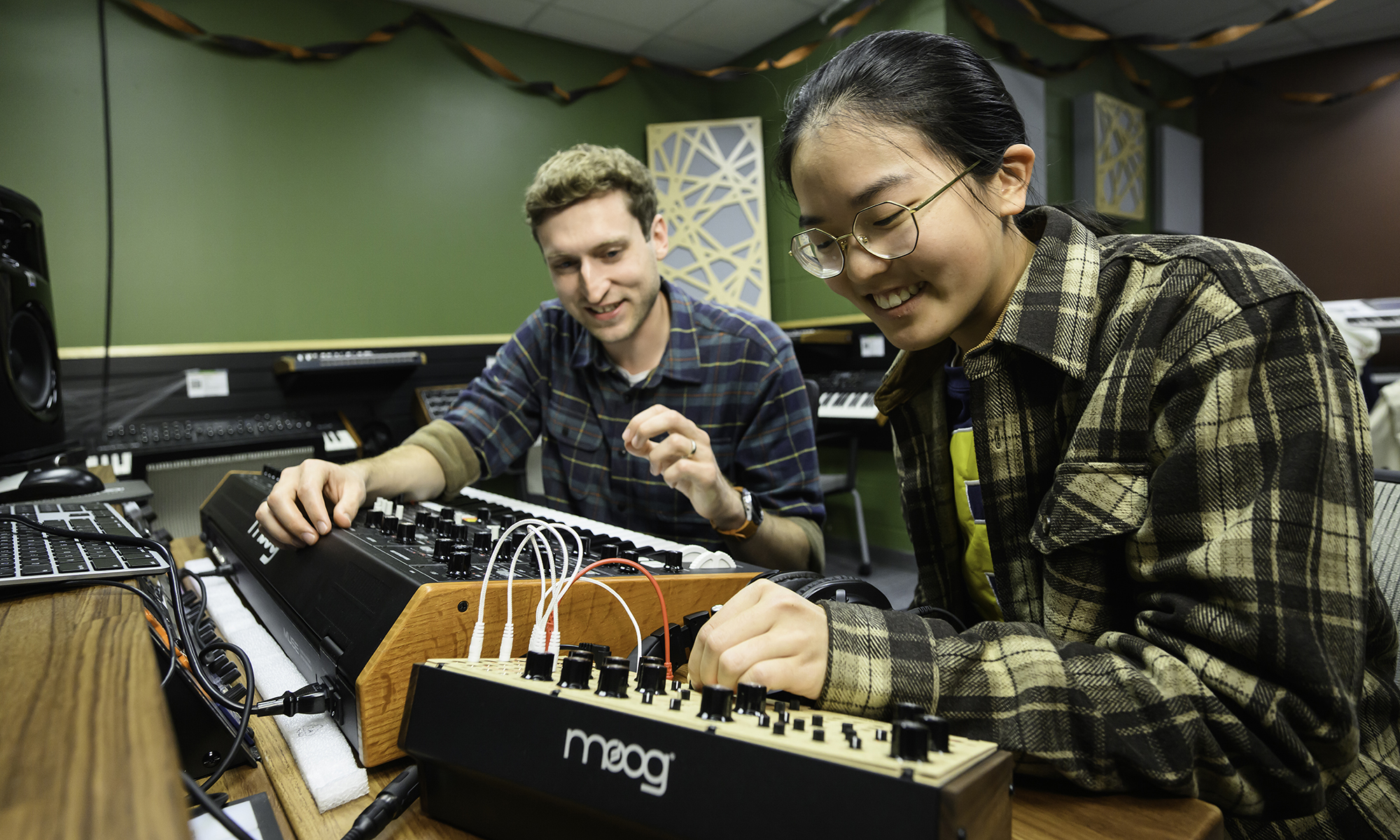
Campus Life
Hitting refresh: 7 reasons why transfer students thrive at URochester
A flexible curriculum, expert professors, and a global environment illustrate why the University of Rochester is worth considering.

The synthesizers Rick Carl ’19, ’20 (MS) created for Moog Music Inc., including the Labyrinth and Muse, are part of URochester’s new cutting-edge synthesizer lab.










